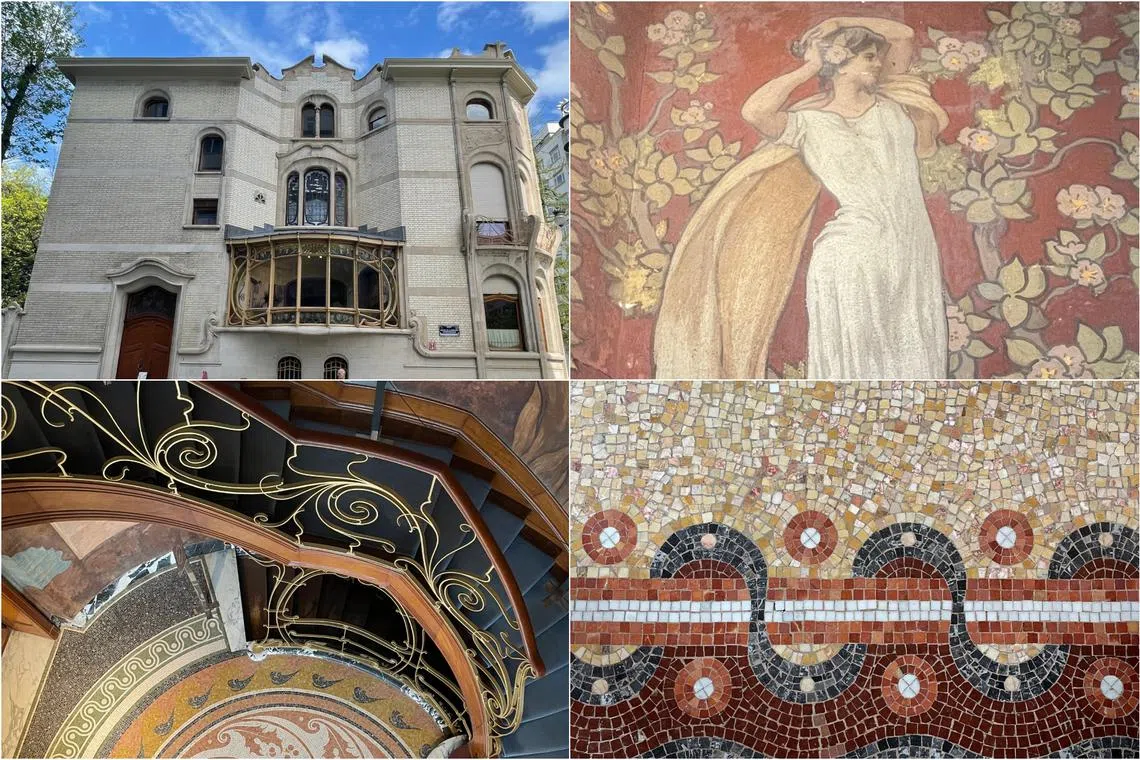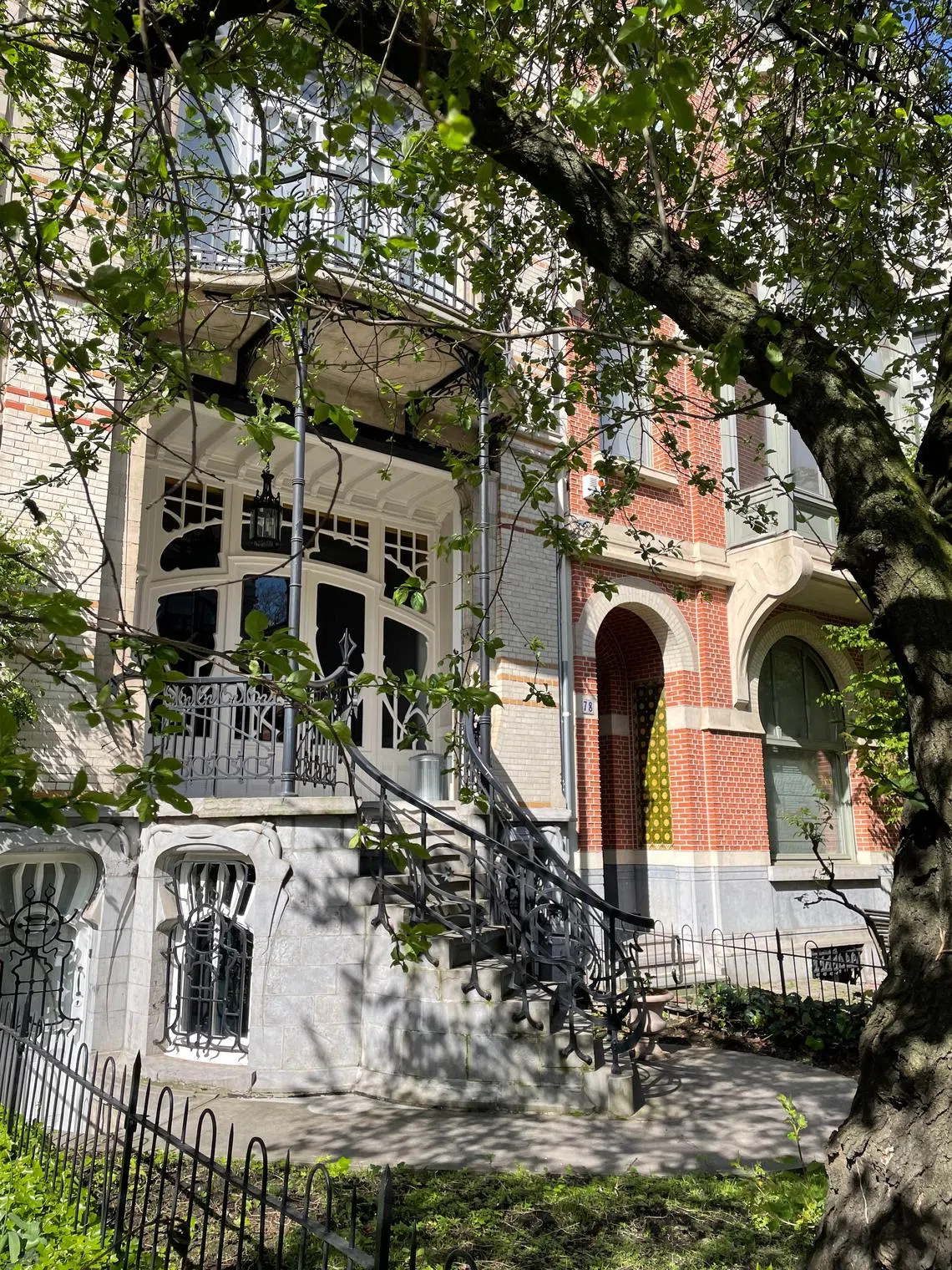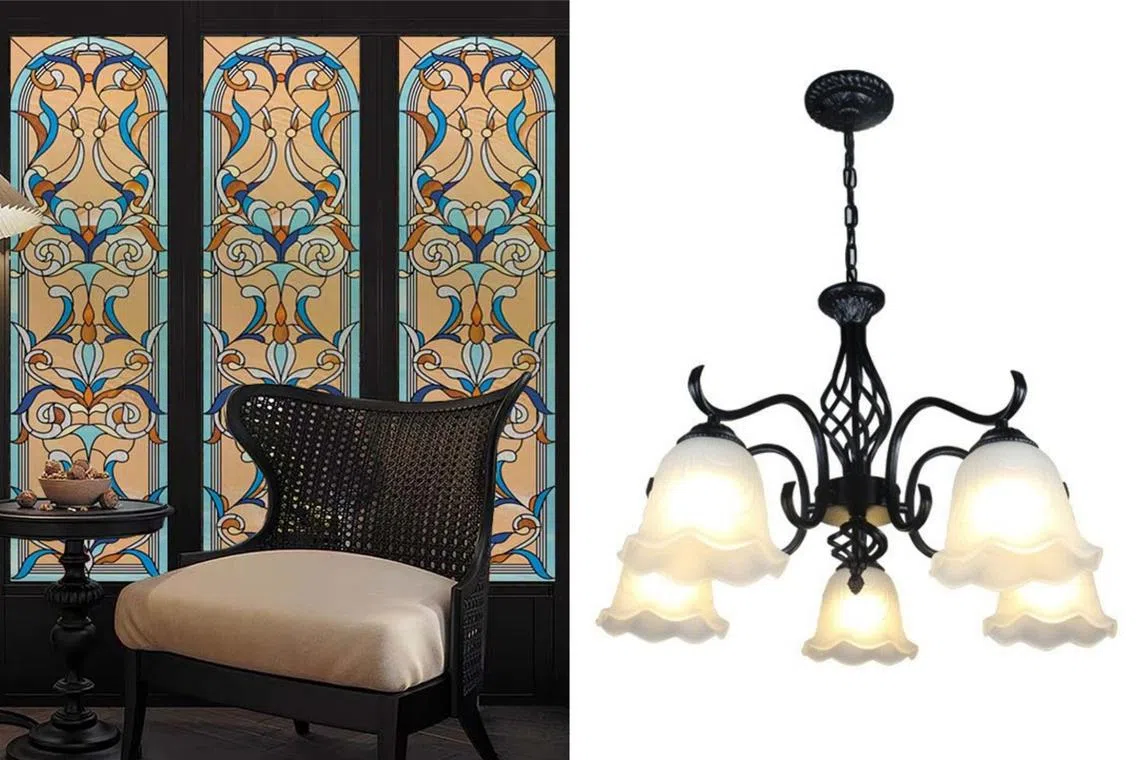Global Design: Be inspired by Art Nouveau spaces in Belgium and Singapore
Sign up now: Get ST's newsletters delivered to your inbox

Maison Hannon imbues Art Nouveau on the inside and out.
ST PHOTOS: YAMINI CHINNUSWAMY
Follow topic:
SINGAPORE – Art and design are everywhere in Belgium, from the fun murals painted on random facades in its capital Brussels to the quirky stepped gables of Flemish buildings in Ghent.
But the most prominent example of the Belgian flair for visual language must be Art Nouveau, a movement that was birthed in the country in the late 19th century and whose echoes still linger in the present day.
Undulating curves, long asymmetrical lines and earthy colours and motifs are the three key features of Art Nouveau design, and these distinguish it from the Art Deco movement that rose to supersede it in the early 20th century.
Fans of 19th-century Czech painter Alphonse Mucha will recognise elements of Art Nouveau in his art and vice versa. Mucha, who died in Prague in 1939 at the age of 78, made his name in Paris. His work became so synonymous with Art Nouveau in France that the movement there was often referred to as “le style Mucha” (the Mucha style).
His most famous works are his iconic posters that depict a series of women – often French stage actress Sarah Bernhardt – as framed by intricate botanical elements and curved archways, and coloured in muted autumnal shades. For the modern eye, these and other art pieces by Mucha still provide an easy visual shorthand for recognising the core iconography of Art Nouveau.
But for those looking for examples beyond the two dimensions of a canvas, there is no shortage of preserved historical buildings in Brussels that imbue Art Nouveau in their interior design and architecture.
Maison Hannon ( maisonhannon.be/en
The corner townhouse – located on the junction of two avenues in the upscale Saint-Gilles neighbourhood – was built in 1902 for engineer Edouard Hannon and his wife Marie. It underwent a nine-year restoration process until June 2023 and small renovations are still ongoing throughout the property.
There is no shortage of striking architecture among the other homes in the area, but Maison Hannon’s plain cream exterior stands out in a neighbourhood full of dark facades and draws the eye towards its many tall and curved windows.
Stepping past the foyer, visitors are met with a space that embodies the couple’s vision for a “dream-like” home that represented their respective interests in botany and antiquity – starting with the floor, which is covered in mosaic tiles laid in an intricate circular pattern.
Light streams through a sun room on the right, where the top and bottom panes of the bay window are covered with stained glass that casts a soft, golden light throughout the former home. On the left, a sweeping, almost theatrical, spiral staircase winds down to a basement – closed to visitors – and up to a second floor of bedrooms.
Beyond the intricate wrought-iron, gold-painting railings of the staircase – themselves a striking example of the elegant curves of Art Nouveau – a fresco painted in soft pastel colours vertically spans the wall linking the two floors.
Another set of frescos in a lounge past the sun room are reminiscent of Mucha’s famous posters depicting willowy women in long, flowing garments and surrounded by leaves, flowers and other elements of nature.
Visitors are told that Maison Hannon was designed such that natural light can flood through its tall clear glass and stained-glass windows to permeate every centimetre and corner. It is an architectural detail that stands in stark contrast to the heavy use of wood panelling throughout its rooms – but the result is a home that feels like it would be an ethereal escape from the coils of urban life, if people still lived there.

Maison Hannon in Brussels showcases Art Nouveau architecture and design as applied in a living space.
ST PHOTO: YAMINI CHINNUSWAMY
Just a 10-minute stroll from Maison Hannon is another former home-turned-museum, this one even more significant to the Art Nouveau movement.
The Horta Museum ( www.hortamuseum.be/en
Horta, who died in 1947 at the age of 86, is considered one of the fathers of Art Nouveau. Unsurprisingly, then, his home is a larger and even more sprawling monument to it as an architectural movement.
It remains fully furnished with items designed by Horta specifically to match the “bones” of the building, such as flower-shaped lamps and sinuously curved wooden chairs. This was not special treatment for his own home, as Horta was known for designing the furniture in his other architectural projects, and some of the surviving pieces are safe-guarded in museums such as Paris’ Musee d’Orsay.
While in Brussels, one can visit other Art Nouveau sites that Horta designed, such as Hotel Solvay ( hotelsolvay.be/en
Built for the son of a prominent Belgian industrialist, Hotel Solvay is a grand mansion where Art Nouveau meets maximalism to give rise to a space that looks and feels majestic and magical.
There are architectural Art Nouveau gems to enjoy outside Brussels as well, such as the Antwerp neighbourhood of Zurenborg. On a bright and nippy spring morning, it proves to be a charming location for a walk and a showcase of the different ways that Art Nouveau can be incorporated into the exterior facade of a home.
There are many examples to feast one’s eyes on, but mine are caught particularly by a white building with tall, curved windows and window railings – it elegantly demonstrates that how one need not feel chained to using only verdant hues like green and brown when incorporating Art Nouveau design into a home.

The Antwerp neighbourhood of Zurenborg contains many homes with exterior facades that were inspired by art nouveau.
ST PHOTO: YAMINI CHINNUSWAMY
Art Nouveau in Singapore
Art Nouveau architecture is trickier to find in Singapore. There are more buildings inspired by Art Deco, with Parkview Square in Bugis being a well-known example.
But there is now Dragonfly Singapore ( www.instagram.com/thedragonflysg

Dragonfly Singapore cocktail bar was conceptualised by Australian designer Ashley Sutton.
PHOTO: DRAGONFLY SINGAPORE
As someone about to embark on a home renovation, I have found myself curious about how people here can incorporate Art Nouveau design into their homes.
Most Singaporeans live in apartments with a facade and overall footprint that cannot be changed, but laser-cut wood panelling across walls and ceilings would achieve some of the intricate detailing seen in the Horta Museum or Hotel Solvay.
For those looking to camouflage a glass door or diffuse the flow of sunlight through a window, online platform Etsy offers a multitude of designs and sizes for stained-glass film inspired by the colours and motifs of Art Nouveau.
Prices vary accordingly to the merchant, size and shipping options. I find an 80cm by 200cm removable decal – which is slightly smaller than the standard door size – that will set me back by $150 or so, all in.
Home owners planning to install or replace a metal gate can also consider a decorative wrought-iron grille. Some suppliers, such as M Aluminium & Glass in Admiralty Street ( magworks.sg/

Art Nouveau-inspired decor.
PHOTOS: KASENYO/ETSY, HORIZON LIGHTS
Some lighting shops, such as Horizon Lights in Paya Lebar ( store.horizon-lights.com.sg
Here is a sample: “Cupule lampshades gracefully cascade, resembling ethereal flowers in full bloom, transforming your living space into a serene and verdant meadow.”
It is an apt summation of the philosophy and vibe of Art Nouveau, and also show why it still has appeal as a design and architectural style, more than a century after it first rose to prominence.
In this day and age, where humanity must continue to encroach upon the earth to house their burgeoning global population of more than 8 billion, Art Nouveau provides a visually pleasing and tangible outlet for whimsy and elegance – one that keeps people rooted in the fluidity and harmony of the natural world.
Global Design is a new series that explores design ideas and experiences beyond Singapore.

